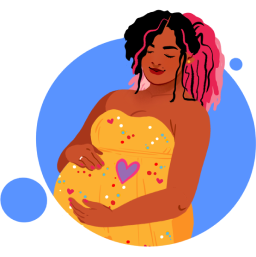
Pregnancy and childbirth can be beautiful, but they can also be full of scary and potentially dangerous conditions. In the past few years, more and more women have been speaking out about their pregnancy experiences, and they aren’t always positive. While most expecting parents have heard of preeclampsia, a serious blood pressure condition that develops during pregnancy (typically after the 20th week), there’s much less information out there about postpartum preeclampsia.
Recently, Meghan Markle opened up about her experience with postpartum preeclampsia, sparking a broader conversation about the dangerous condition. “It’s so rare and so scary,” she shared on her podcast.
Here’s what expecting parents should know about postpartum preeclampsia.
What is postpartum preeclampsia?

Like preeclampsia, postpartum preeclampsia is a serious condition related to high blood pressure. Unlike preeclampsia, which occurs during pregnancy, postpartum preeclampsia only happens after a baby is born. According to the Cleveland Clinic, “Most people develop symptoms of postpartum preeclampsia within 48 hours of childbirth. However, the condition can develop up to six weeks after delivery.”
Postpartum preeclampsia can have serious complications if left untreated, like seizures, strokes, thromboembolism, pulmonary edema, and HELLP syndrome.
Risk factors

Anyone who has just had a baby can develop postpartum preeclampsia, even if you’ve never had high blood pressure or preeclampsia. Although the exact cause of postpartum preeclampsia is unknown, doctors know that there are certain risk factors that can increase the chances that you’ll develop the condition. These risk factors include:
- previous history (or family history) of preeclampsia or postpartum preeclampsia
- high blood pressure during pregnancy
- chronic high blood pressure
- being younger then 20 or older than 40
- expecting multiples (twins or more)
- obesity
- Type 1 or Type 2 diabetes
- autoimmune conditions
Symptoms

The first few days after having a baby are totally overwhelming, both physically and mentally. Your body is going through a lot of changes very rapidly, so it’s easy to overlook unusual symptoms. According to the Mayo Clinic, many women don’t realize they’re experiencing postpartum preeclampsia symptoms. “You might not suspect that anything is wrong when you’re focused on recovering after childbirth and caring for a newborn,” they explain.
Here are some signs and symptoms to look out for:
- high blood pressure (140/90 mmHg or higher)
- proteinuria: excess protein in your urine
- severe headache
- changes in vision, including light sensitivity, blurred vision, or vision loss
- upper abdominal pain
- nausea and vomiting
- swelling of face, hands, feet, or limbs
- shortness of breath
- increased urination
- rapid weight gain
If you experience any of these symptoms postpartum, seek immediate medical care.
Treatment

Postpartum preeclampsia does not go away on its own — it requires immediate medical intervention.
To diagnose postpartum preeclampsia, doctors may perform a blood pressure check, urinalysis, blood tests, or a brain scan. If you are diagnosed with this condition, there are a number of medications doctors may give you: blood pressure medication to lower your blood pressure, a blood thinner to reduce the risk of blood clots, and anti-seizure medication.
Prevention

There is no guaranteed way to prevent postpartum preeclampsia. That said, the best thing you can do is attend all your prenatal appointments, share an accurate medical history with your doctors, and make sure you’re aware of the signs and symptoms.



